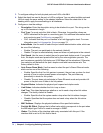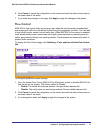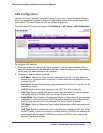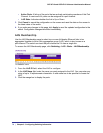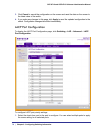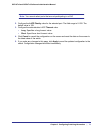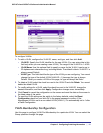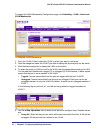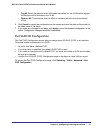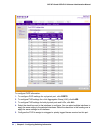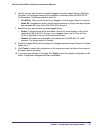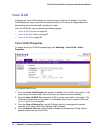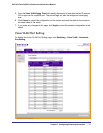
80 | Chapter 3: Configuring Switching Information
GS716Tv2 and GS724Tv3 Software Administration Manual
VLANs
Adding Virtual LAN (VLAN) support to a Layer 2 switch offers some of the benefits of both
bridging and routing. Like a bridge, a VLAN switch forwards traffic based on the Layer 2
header, which is fast, and like a router, it partitions the network into logical segments, which
provides better administration, security and management of multicast traffic.
By default, all ports on the switch are in the same broadcast domain. VLANs electronically
separate ports on the same switch into separate broadcast domains so that broadcast
packets are not sent to all the ports on a single switch. When you use a VLAN, users can be
grouped by logical function instead of physical location.
Each VLAN in a network has an associated VLAN ID, which appears in the IEEE 802.1Q tag
in the Layer 2 header of packets transmitted on a VLAN. An end station may omit the tag, or
the VLAN portion of the tag, in which case the first switch port to receive the packet may
either reject it or insert a tag using its default VLAN ID. A given port may handle traffic for
more than one VLAN, but it can only support one default VLAN ID.
From the VLAN link, you can access the following pages:
• VLAN Configuration on page 80
• VLAN Membership Configuration on page 81
• Port VLAN ID Configuration on page 83
VLAN Configuration
Use the VLAN Configuration page to define VLAN groups stored in the VLAN membership
table. The GS716T and GS724T support up to 64 VLANs. VLAN 1 is created by default, and
all ports are untagged members.
To display the VLAN Configuration page, lick Switching VLAN Basic VLAN
Configuration.



